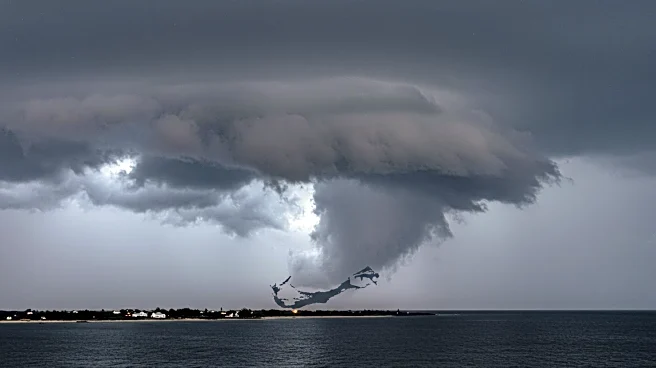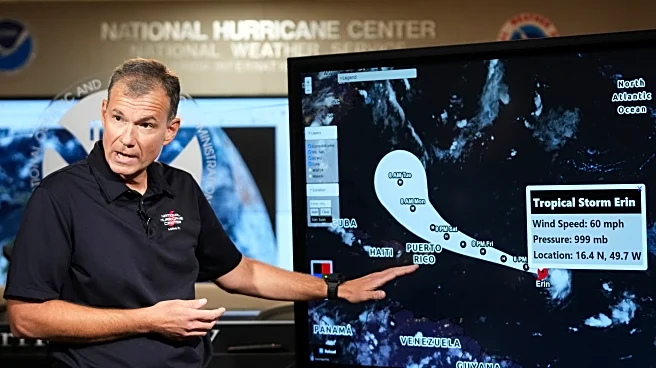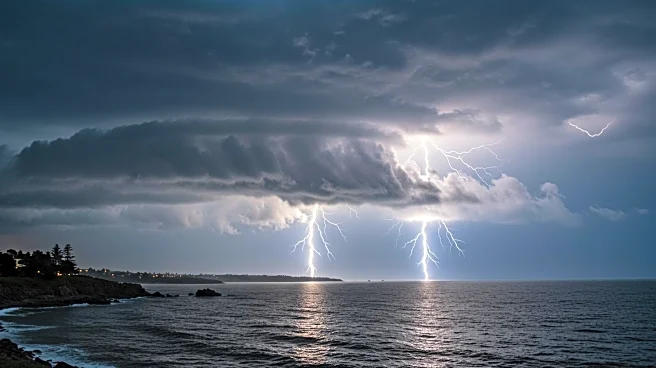Rapid Read • 7 min read
Hurricane Erin has rapidly intensified into a Category 5 hurricane in the Caribbean, according to the National Hurricane Center. The storm, which began as a tropical storm earlier in the week, has seen its wind speeds increase dramatically, reaching 160 mph. Erin is currently located 105 miles north of Anguilla and is moving west at 17 mph. Although it is not expected to make landfall, the hurricane's strong winds are affecting nearby islands, prompting warnings of potential flooding and landslides. The storm is forecasted to eventually swerve away from the continental United States, but it poses a significant threat to Bermuda, which could experience the stronger eastern side of the hurricane.
AD
The rapid intensification of Hurricane Erin highlights the increasing frequency of powerful storms, a trend that has been linked to climate change. Warmer ocean temperatures are contributing to the strength and speed of these storms, complicating forecasting efforts and emergency preparedness. The potential impact on Bermuda and nearby Caribbean islands underscores the need for vigilance and preparedness in regions prone to hurricanes. The economic and infrastructural damage from such storms can be significant, affecting tourism, local economies, and the safety of residents.
Hurricane Erin is expected to continue its path over the Atlantic, curving northward between the Southeast U.S. and Bermuda. The storm is likely to remain a major hurricane as it progresses, with offshore waves reaching up to 85 feet. While the U.S. East Coast is expected to remain unaffected, Bermuda may need to prepare for potential impacts. The storm could transition into a powerful nontropical storm as it moves towards Atlantic Canada, eventually being absorbed by the jet stream near Greenland and Iceland.
AD
More Stories You Might Enjoy











